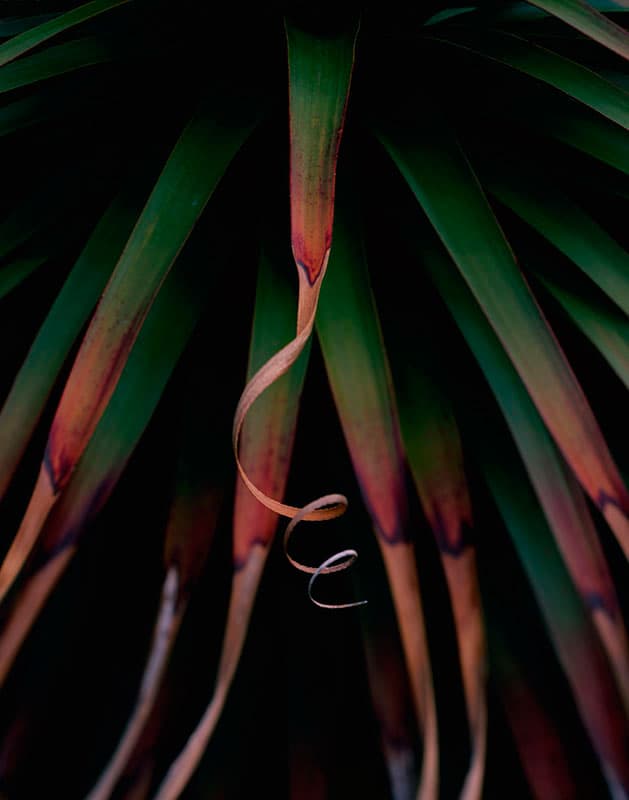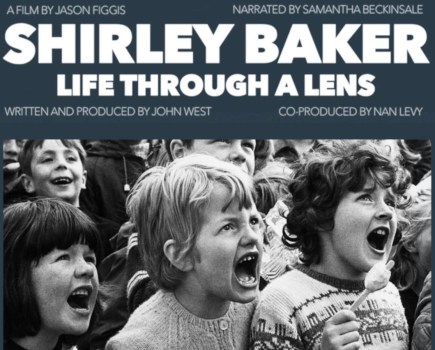
David Ward is one of the UK’s finest landscape photographers. With more than 20 years’ experience in large-format photography, he has photographed extensively throughout the UK and in countries such as Canada, Iceland, Norway and France. He has also led workshops for Light & Land. David has written two books on his photographic philosophy called Landscape Within and Landscape Beyond. Each month, he will discuss the story behind one of his fantastic landscape photographs.
This photograph was taken at Cradle Mountain-Lake St Clair National Park while I was on a trip to Tasmania, to the south of mainland Australia, last November. Cradle Mountain has some of the best-preserved upland habitats on the island. It’s full of the country’s typical vegetation, which looks very strange to somebody coming from the northern hemisphere. It has a kind of primeval feel to it, which is not surprising since an awful lot of the plant life is made up of very ancient species. You get huge tree ferns, some as tall as 15 metres (49ft), and one of these odd plants is the pandani, the subject of this photograph. This particular stretch was next to Boardwalk in Cradle Mountain, and on every single plant all the ends of the leaves had these little spirals on them. I found these fascinating, and wanted to highlight it while creating a simple graphic background for it.
I used a 210mm telephoto lens, which allowed me to isolate the background. I tried to make the composition fairly symmetrical. I’ve said before that for me the art of photography is about distillation, about focusing on the relevant things, and here for me it was the details and structure of this plant. Two things I think really work in an image are rhythm and repetition, and here you can see this in the organised layering of the leaves. The spiral grows from pretty much in the centre of the frame, but if you look in the background it’s not all totally symmetrical. I didn’t want the leaves on either side to match each other exactly. I could have probably spent a lot of time messing around trying to make them do that, but I decided not to. Nothing should be perfect.
I also like the way the plant disappears into darkness. The lightest part of the frame is that central spiral and, because we read photographs from dark to light, that’s where the viewer’s eye will ultimately end up. Almost inevitably, no matter where you look, you’ll return to it, because it’s the one structure that’s different in the frame. If I’d included the spirals on the other leaves, it would have diluted the image.

This image gave me some difficulties in terms of focus, not least because the day was quite windy. There was lots of standing around and waiting for the wind to die, then being just about to press the button when it picked up again. The spirals were quivering the whole time. It was early evening, and since I was using a shutter speed of 1/8sec I was struggling to get enough depth of field. I wanted just that one spiral to be sharp, which was a difficult thing to achieve. I shot this at f/11 2/3 on the Linhof Technikardan, which on a 5x4in camera is a very modest aperture – I think wide open on the 210mm lens is f/8 or maybe even f/9, so it’s only just stopped down from wide open.
It took me about three or four minutes of looking at this particular plant before I found a shape that I wanted to photograph. The longest time was spent on just trying to get the focus and exposure correct. On a subject like this, if you move the camera 1/2in it will make a huge difference as to where the background elements will end up, so there are lots of very tiny fiddling adjustments to be done – tiny manoeuvrings of the tripod leg. This makes just focusing it more of a nightmare as well. I used some movement to lay the plane of focus along the leaf, in order to improve on the fairly shallow depth of field. This meant the whole of the leaf with the spiral was sharp enough – if I’d shot it without any movement then probably halfway up the spiral it would have started to become out of focus.
This image is an example of something I always try to do, which is working with what’s presented to me rather than trying to impose a picture on the landscape. If I get somewhere and it’s not the right light to shoot vistas or details, then I find something else to shoot. People often go to locations with an agenda, a composition in mind that they want to shoot. They’ll stand exactly where somebody else has shot something and they’ll shoot that same composition, even though it’s completely different light and it’s the wrong time of year. Composition is usually described as being about forms and how you place the forms in the frame, but of course composition is more than that. It is also about light, colour, motion blur and shutter speed. Composition depends on all these things – it’s not one or the other, it’s everything together.
David Ward was talking to Jon Stapley
To see more of David’s images or to book a place on one of his workshops, visit www.into-the-light.com







